
تاريخ الفيزياء

علماء الفيزياء


الفيزياء الكلاسيكية

الميكانيك

الديناميكا الحرارية


الكهربائية والمغناطيسية

الكهربائية

المغناطيسية

الكهرومغناطيسية


علم البصريات

تاريخ علم البصريات

الضوء

مواضيع عامة في علم البصريات

الصوت


الفيزياء الحديثة


النظرية النسبية

النظرية النسبية الخاصة

النظرية النسبية العامة

مواضيع عامة في النظرية النسبية

ميكانيكا الكم

الفيزياء الذرية

الفيزياء الجزيئية


الفيزياء النووية

مواضيع عامة في الفيزياء النووية

النشاط الاشعاعي


فيزياء الحالة الصلبة

الموصلات

أشباه الموصلات

العوازل

مواضيع عامة في الفيزياء الصلبة

فيزياء الجوامد


الليزر

أنواع الليزر

بعض تطبيقات الليزر

مواضيع عامة في الليزر


علم الفلك

تاريخ وعلماء علم الفلك

الثقوب السوداء


المجموعة الشمسية

الشمس

كوكب عطارد

كوكب الزهرة

كوكب الأرض

كوكب المريخ

كوكب المشتري

كوكب زحل

كوكب أورانوس

كوكب نبتون

كوكب بلوتو

القمر

كواكب ومواضيع اخرى

مواضيع عامة في علم الفلك

النجوم

البلازما

الألكترونيات

خواص المادة


الطاقة البديلة

الطاقة الشمسية

مواضيع عامة في الطاقة البديلة

المد والجزر

فيزياء الجسيمات


الفيزياء والعلوم الأخرى

الفيزياء الكيميائية

الفيزياء الرياضية

الفيزياء الحيوية

الفيزياء العامة


مواضيع عامة في الفيزياء

تجارب فيزيائية

مصطلحات وتعاريف فيزيائية

وحدات القياس الفيزيائية

طرائف الفيزياء

مواضيع اخرى
Constant Matrix Perturbation
المؤلف:
Sidney B. Cahn, Gerald D. Mahan And Boris E. Nadgorny
المصدر:
A GUIDE TO PHYSICS PROBLEMS
الجزء والصفحة:
part 1 , p 62
14-8-2016
1489
Constant Matrix Perturbation
Consider a system described by a Hamiltonian
 (i)
(i)
 (ii)
(ii)
 (iii)
(iii)
where and G are positive.
a) Find the eigenvalues and eigenvectors of this Hamiltonian.
b) Consider the two states
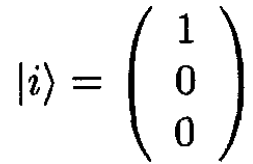 (iiii)
(iiii)
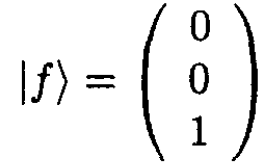 (iiiii)
(iiiii)
At t = 0, the system is in state |i⟩. Derive the probability that at any later time it is in state |f ⟩.
SOLUTION
a) Define x = ε – λ – G where λ is the eigenvalue. We wish to diagonalize the matrix by finding the determinant of
 (1)
(1)
 (2)
(2)
When confronted by a cubic eigenvalue equation, it is best first to try to guess an eigenvalue. The obvious guesses are x = ±G. The one that works is x = -G, so we factor this out to get
 (3)
(3)
 (4)
(4)
 (5)
(5)
We call these eigenvalues λ1, λ2, λ3, respectively. When we construct the eigenfunctions, only the one for λ3 is unique. Since the first two have degenerate eigenvalues, their eigenvectors can be constructed in many different ways. One choice is
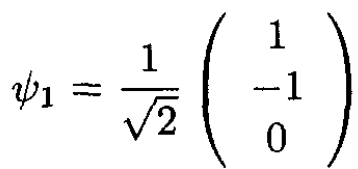 (6)
(6)
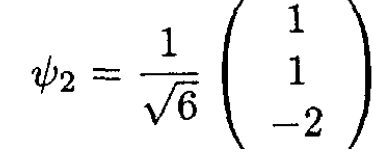 (7)
(7)
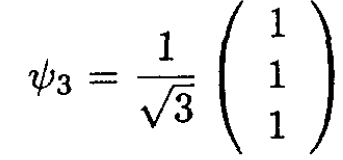 (8)
(8)
b) Since the three states ѱi form a complete set over this space, we can expand the initial state as
 (9)
(9)
 (10)
(10)
 (11)
(11)
 (12)
(12)
To find the amplitude in state |f ⟩ we operate on the above equation with ⟨f |. The probability P is found from the absolute-magnitude-squared of this amplitude:
 (13)
(13)
 (14)
(14)
 الاكثر قراءة في مواضيع اخرى
الاكثر قراءة في مواضيع اخرى
 اخر الاخبار
اخر الاخبار
اخبار العتبة العباسية المقدسة

الآخبار الصحية















 قسم الشؤون الفكرية يصدر كتاباً يوثق تاريخ السدانة في العتبة العباسية المقدسة
قسم الشؤون الفكرية يصدر كتاباً يوثق تاريخ السدانة في العتبة العباسية المقدسة "المهمة".. إصدار قصصي يوثّق القصص الفائزة في مسابقة فتوى الدفاع المقدسة للقصة القصيرة
"المهمة".. إصدار قصصي يوثّق القصص الفائزة في مسابقة فتوى الدفاع المقدسة للقصة القصيرة (نوافذ).. إصدار أدبي يوثق القصص الفائزة في مسابقة الإمام العسكري (عليه السلام)
(نوافذ).. إصدار أدبي يوثق القصص الفائزة في مسابقة الإمام العسكري (عليه السلام)


















